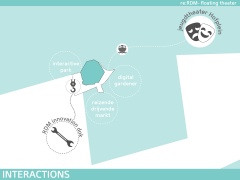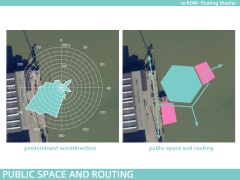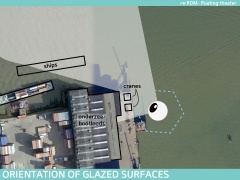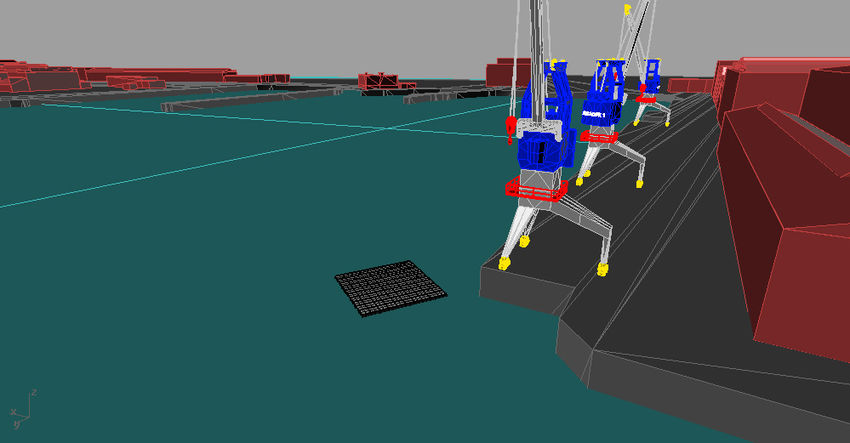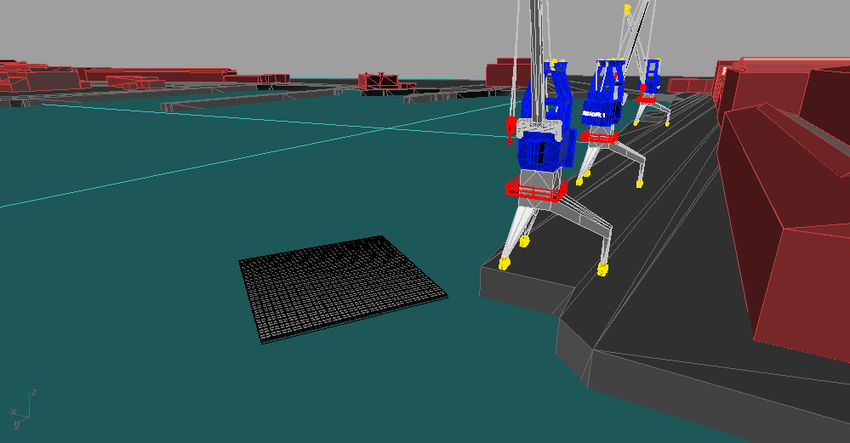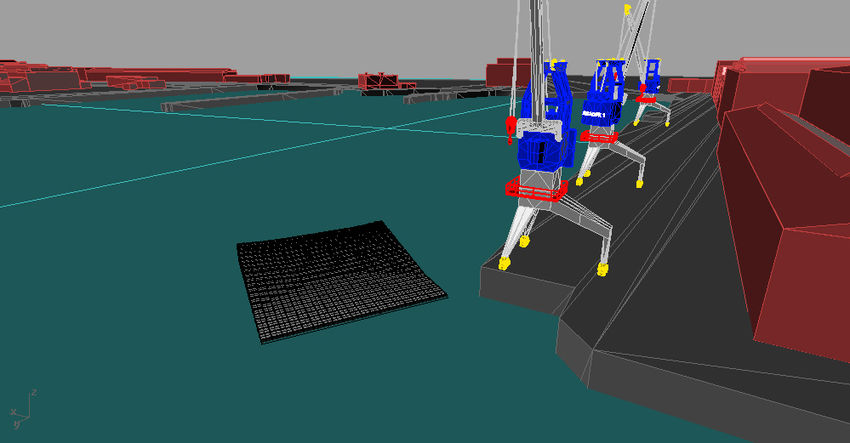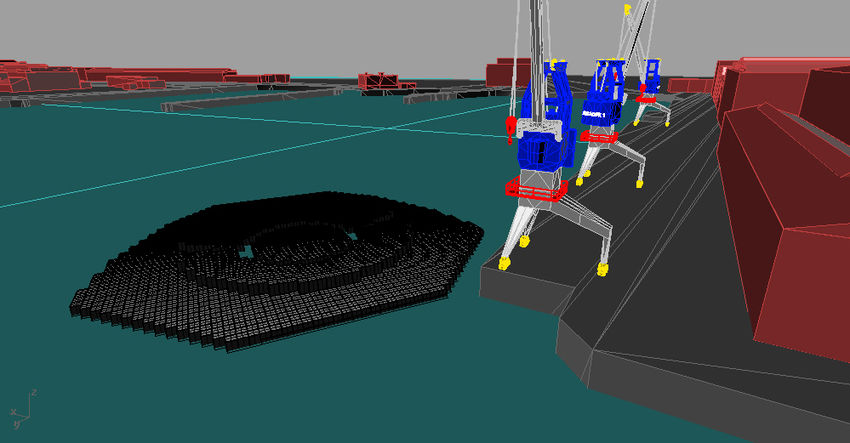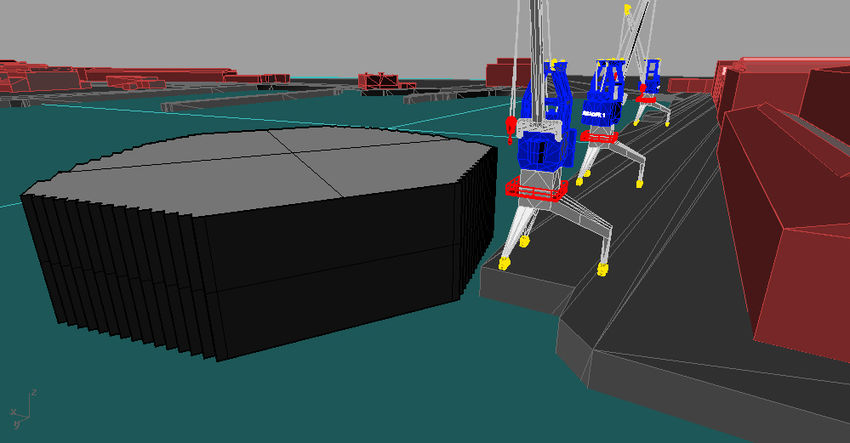project35:Interactions
Contents |
Introduction
The Floating Theater can act as a catalyst in the RDM area. The shape and performance of the theatre is dependent on interactions with social and economic actors and climatic influences.
Climatic and local interactions
The interior of the theatre is protected from the harsh climate by a glass and steel structure, making it functional all through the winter period. The building's glazed surfaced are oriented to the north-west to allow for neutral sunlight and great views towards the industrial site and over the Nieuwe Maas. Because of the dominant wind from the south-west, the public spaces are tucked away on the building's and dock's lee side.
The Floating Theatre is located inbetween three projects (Digital Gardener, Reizende Drijvende Markt and Interactive Park), using it's boardwalk not only to connect these three with the dock but also to support a café's terraces and small outdoor theatre space. The existing crane is an essential component connecting the production capabilities in the Innovation Dok to the theatre, moving past the Onderzeebootloods. It is a landmark object which can also be used as a performative elements or fly tower.
Socal interactions
Focused primarily on education and production, a joint effort by the Museum Boijmans van Beuningen, Rotterdam Port Authority, city of Rotterdam and Albeda College can make this area a new cultural meeting point. The Museum Boijmans van Beuningen is using the nearby Onderzeebootloods to exhibit art installations and could be willing to invest in a stage for performance art and theater. The students from the Albeda College could put their knowledge and skills to practice in a work-learn environment, building stage constructions and props. In the early phase of the project the stage could be used for public performances by local theatre schools and groups like the MBO Theater School. Initially the theatre may require funding from external sources, possibly subsidies (eg. FondsBKVB) or grants. If it proves to be succesful it will be able to expand and ultimately sustain itself. In the early stages it could function as a open-air performance stage when the weather allows for it. By expanding and adding a modular construction system, the Floating Theatre can be covered and expanded to be a full-scale theatre seating up to 900 people.
Economic interactions
Being a cultural institution, the theater relies on funding (subsidies and investments) and ticket sales for its succes. The amount of money people are willing to spend on cultural acitvities depends mostly on their disposable income and declines during economic downturn. Subsidies also depend heavily on the state of the economy. Therefore the theater will be able to grow when the economy is strong, but remain the same when economic conditions are not so favourable. It can also grow based on special events (eg. concerts or the Rotterdam Film Festival).
